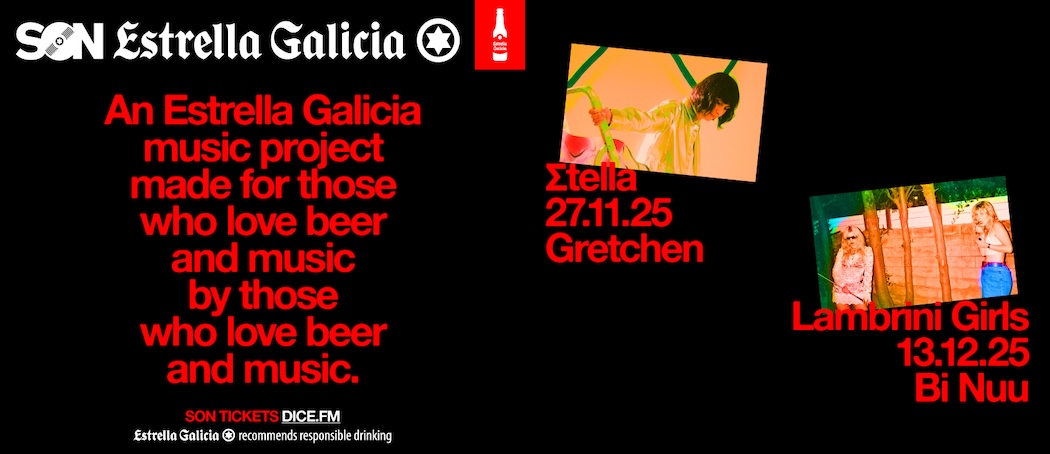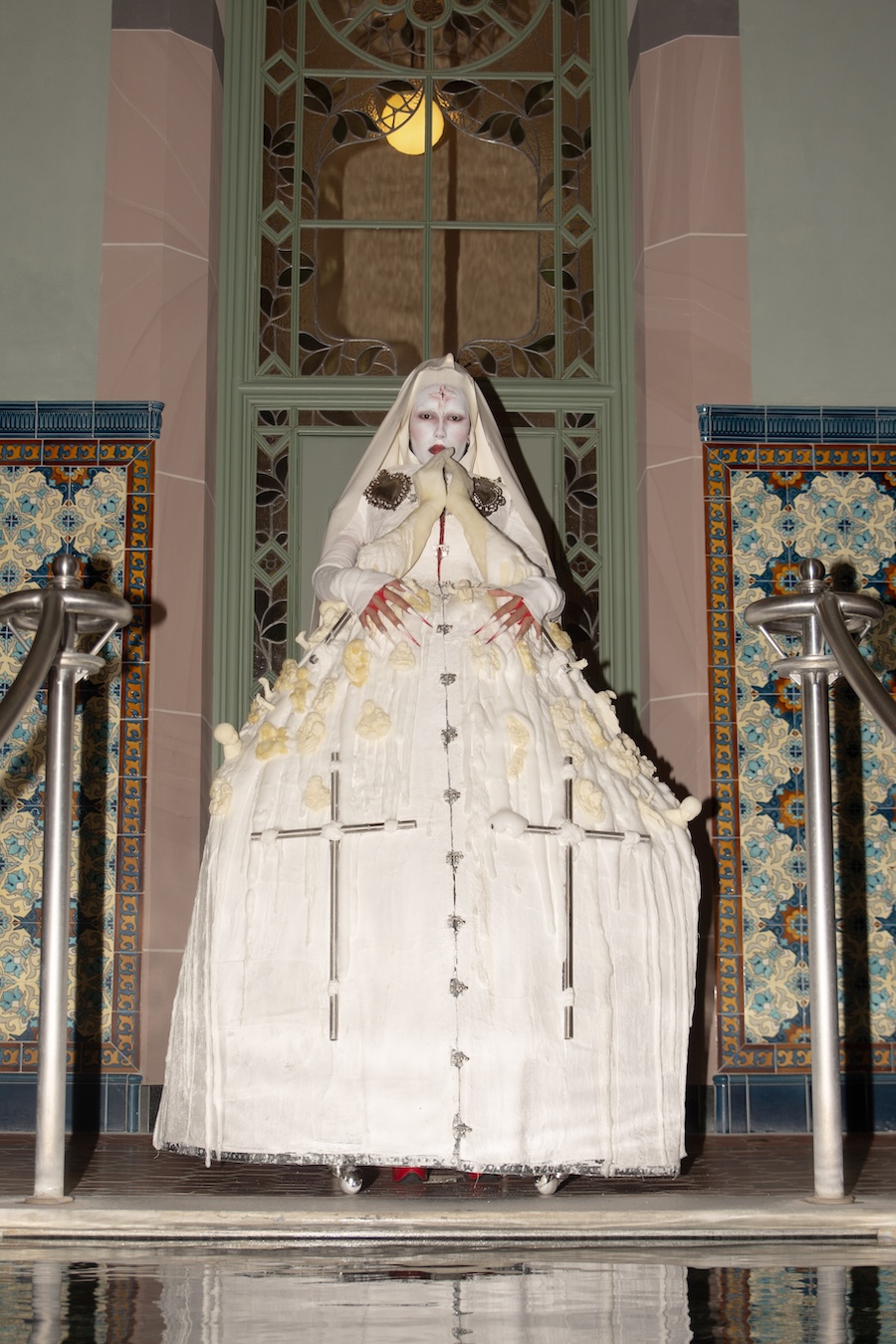
We are thrilled to announce that our KALTBLUT. Magazine Award for 2025 was awarded to the outstanding short fashion film, The Feminine Urge, directed by Lilian Brade, Phuong An Phi, and Niclas Hasemann. This recognition took place during the Fashionclash Festival 2025 in Maastricht, and we couldn’t be prouder of this remarkable piece of art.
The Feminine Urge is a powerful exploration of female rage and the monstrous feminine, transforming the narrative into a visceral experience that touches on the complexities of femininity. The film captivates with its intense visuals and powerful storytelling, where fashion plays an essential role in conveying its themes.
We had the privilege of interviewing the three creative minds behind this stunning work, and their insights reflect the heart and soul poured into The Feminine Urge. Lilian Brade articulated how her personal heritage fuels her designs, intertwining feminist activism with the celebration of the beauty of ageing. She draws inspiration from her mother and grandmother, reflecting on the societal perceptions of women’s bodies and beauty standards. This intimate connection with her foremothers inspired a matriarchal collection that confronts traditional views head-on, turning the so-called ‘ugly’ into a focal point of strength.
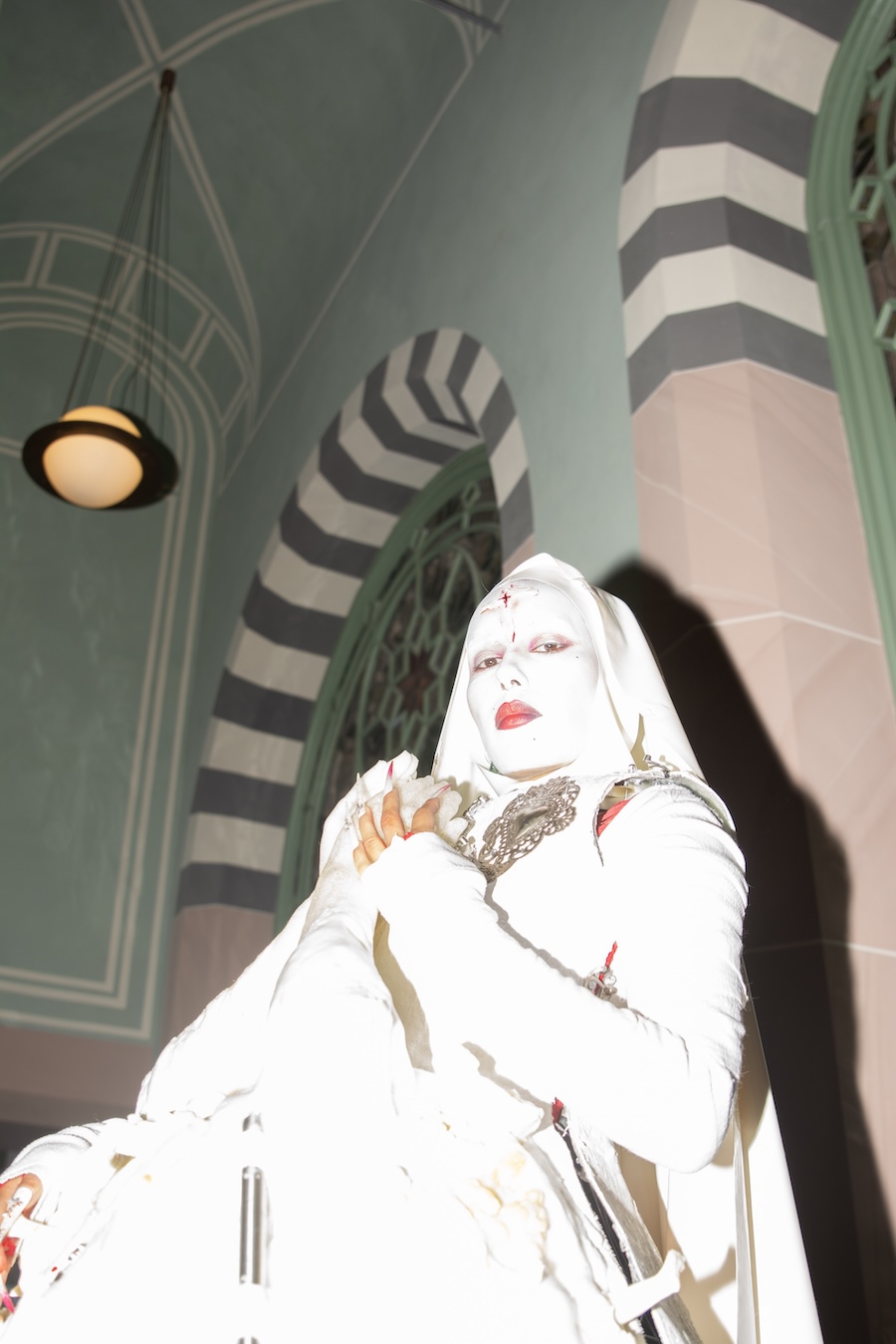
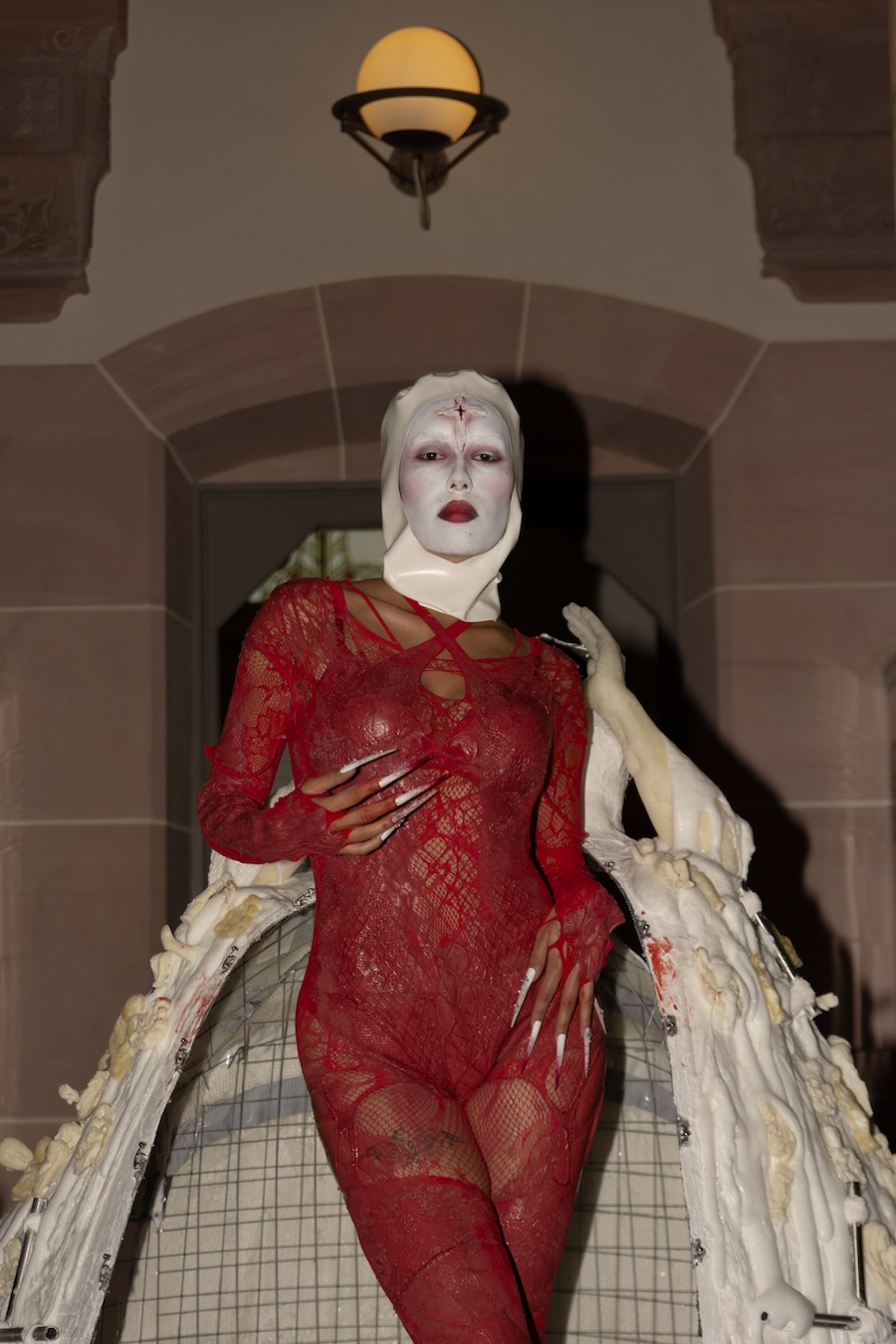
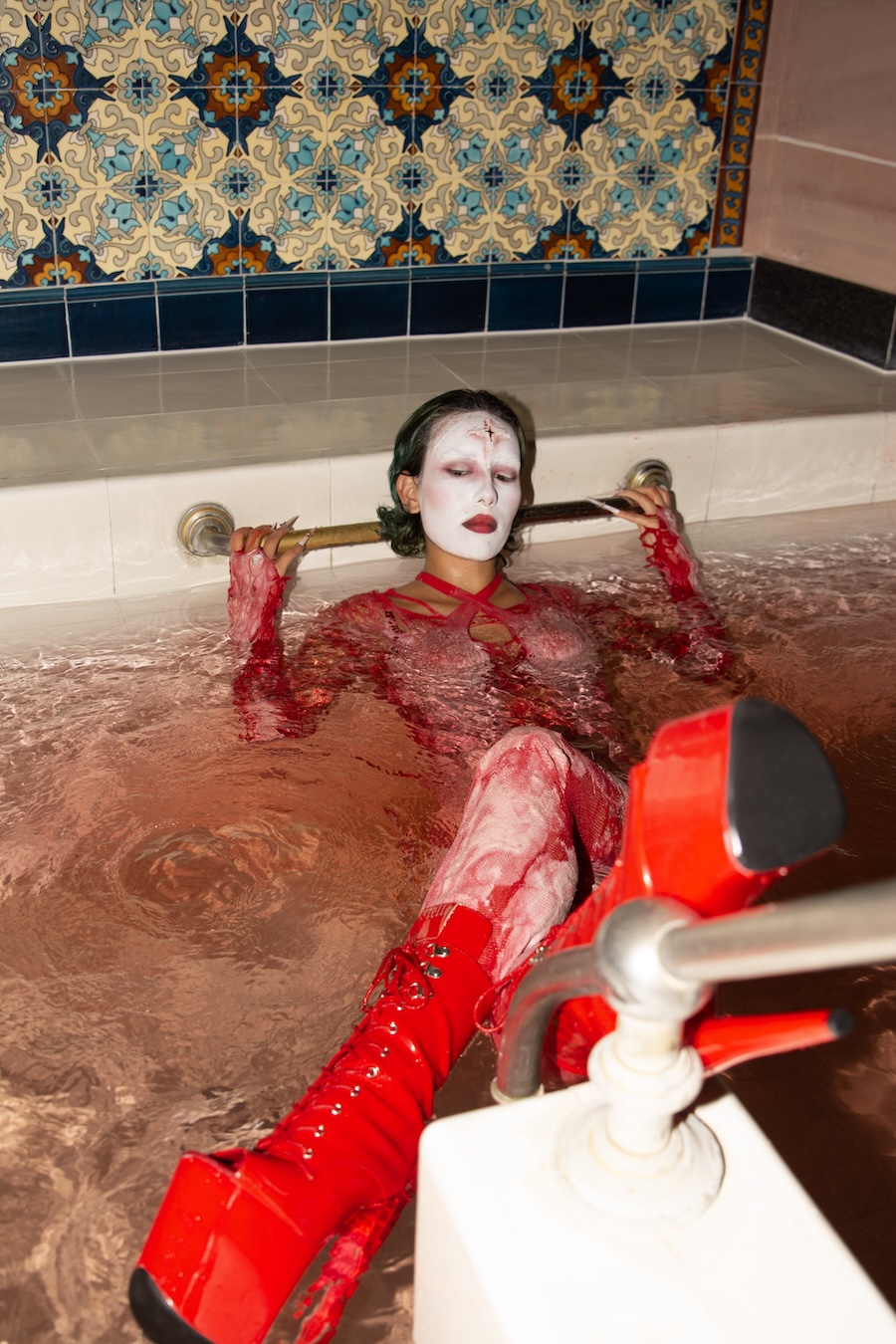
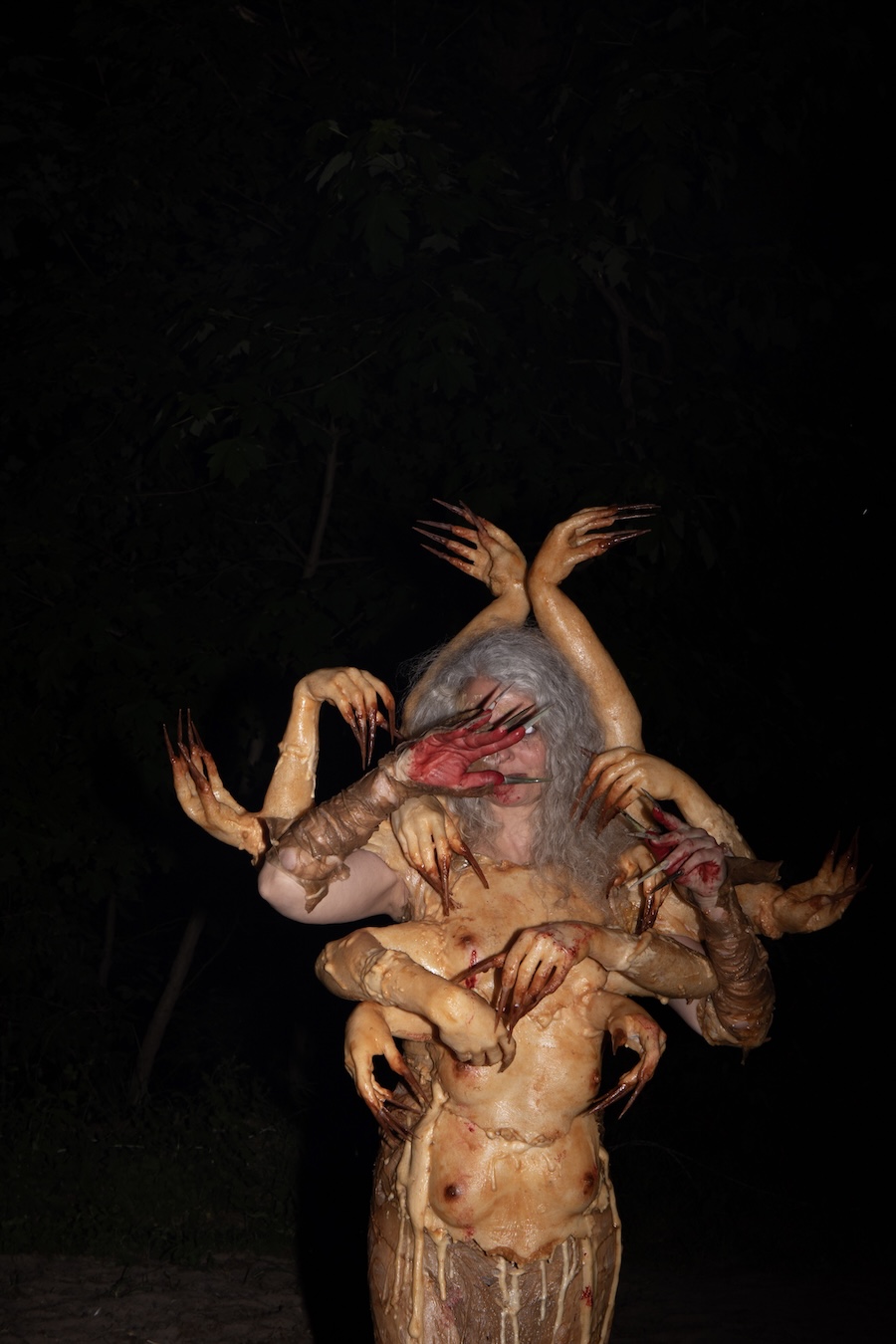
We love The Feminine Urge, the film, the concept, the fashion, and the idea. This award is not just a recognition of artistic achievement, but a celebration of the bold narratives that challenge and inspire. We invite everyone to explore this extraordinary work and join the conversation on femininity and empowerment in fashion.
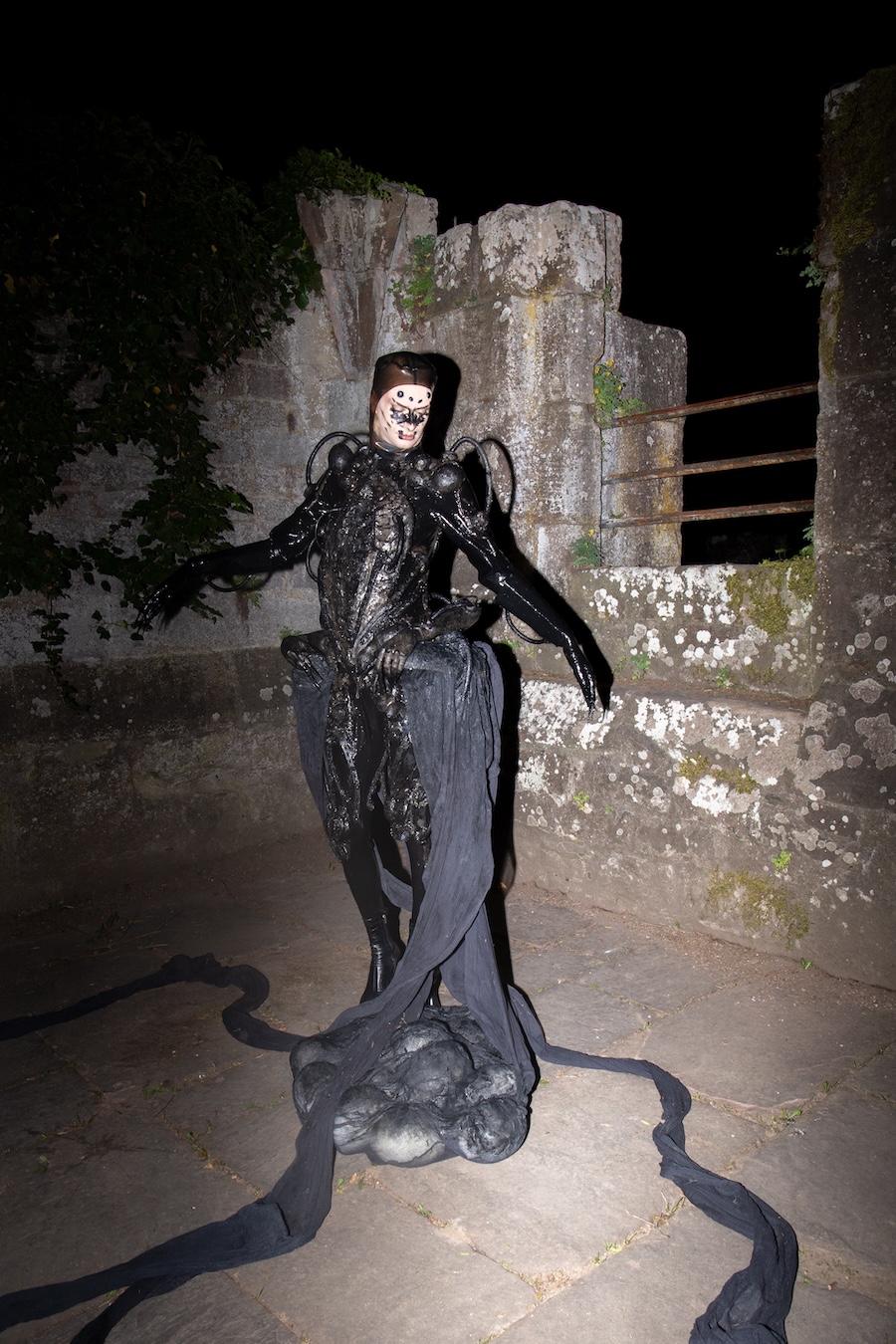

Lilian Brade:
Can you share how your personal heritage influences your designs in “The Feminine Urge”?
My desire to weave feminist activism into my designs can, without a doubt, be traced back to the women in my family, especially my mother and my grandmother. It really started with my previous collection, “Schrulle”, which was inspired by my grandmother’s handicrafts and those of other women, which had been forgotten, their craftsmanship unappreciated, their hard work collecting dust. I saw similarities related to the ageing process of the female-perceived body, conversations with my mother and grandmother about their bodies not being the way they used to, being told by society they were not beautiful to look at anymore, that they were spent. This sparked a matriarchal collection, paying homage to our foremothers, celebrating craft, intergenerational community and the unconventional beauty of ageing. Through it I first found the thrill in features conventionally perceived as ugly or repulsive, questioning traditional beauty standards through fashion.
But when I finished, I still had so much anger in me about the mistreatment of these women. About the suppression of feminine sexuality, of queer and unconventionally feminine bodies, the stigmata surrounding motherhood and characteristics traditionally assigned to femininity – caringness, naivety, emotionality, social constraints and expectations placed on FLINTA* people, sexualization, fetishisation. I knew that I wanted to show more courage toward being ugly. The idea of the monstrous feminine and the medium of horror I found through Phuong An Phi. This thrill of the repulsive I had been pursuing was already being lived unapologetically in the subversive, feminist horror film. And thus, “The Feminine Urge” was born.
I feel like I have also been able to teach the women in my life through my work, from my mother deciding to grow out her grey hair to her becoming one of my biggest muses and even starring in our film as “Mater Gregiorum”.


What was the main inspiration behind the fashion showcased in the film?
Delving deeper into horror theory, I discovered Barbara Creed, the theorist who first dissected the horror film from a feminist perspective, shaping the term “Monstrous Feminine”. She assigned archetypes, characters or concepts that frequently reappear in horror, such as “Vagina Dentata” and the “Archaic Mother”. From there, I chose the archetypes that spoke to me the most and, together with An, built my own ones as well. It was more a development of characters than looks, really. We wrote character sheets, scripts, and made storyboards, with the film in mind from the very beginning. Simultaneously, I started work on the collection. I have always liked to play with expectations, feeding into stereotypes only to consciously dissolve them. That is why for “The Feminine Urge” I chose to introduce the known, tame and submissive woman, to then distort her into caricature, letting her become dominant, distorted and grotesque. Fashion was the perfect medium for that, offering iconic silhouettes and garments such as the wedding dress, smocks, aprons, lingerie or the straightjacket, that are intrinsically tied to patriarchy, evoking associations of domesticated, suppressed femininity.
Material and texture have always been a central part of my creative process, and I am intrigued by unconventional materialities that don’t usually appear in fashion. Drawing from the realm of special effects and prop-making felt only natural, seeing as I was creating a collection for a horror film. Bodycasting, silicone moulds and latex shaped the corporeal design language of the collection: Additional extremities created by casting real body parts, reliefs and adornments that were attached and coated over to make them appear as part of the body, under the skin. Cold, hard metal elements digging into soft, fleshy textures, creating almost graphic, surgical, invasive imagery. Everything skin-adjacent, liquid, dripping, wet, glossy surfaces, tissue-like materials, reaching from membranes, eggshells, reptile skin, body hair, bloodied muscle fibres and tearing skin to foreign, alienesque or insectoid armour. I also worked with medical materials – surgical tarps, gauze, bandages, opening up the world of laboratories and medicine, often places of patriarchal control and feminine fears.
Still, the looks offer a strange kind of beauty and allure. I wanted to create self-empowered antagonists, finding strength in their own abjectness, embracing raw, messy, primal femininity and evading the idea of the digestible woman.


How do you approach the balance between storytelling and fashion when creating a short film?
To me, storytelling is everything. I like to plan every detail that I can, from styling to locations, models and performers, making sure that the result is a whole new world, ready to be explored and intensely perceived. If my designs don’t tell a story, they are incomplete to me. I know that I test boundaries in that sense, working in places that some people would not categorise as fashion anymore, but then again, who gets to decide what is fashion and what is not?
What I didn’t expect was getting so caught up in the medium of film. “The Feminine Urge” is my first work that comes with a film, and to be honest, I didn’t have a lot of knowledge in that field before this work. Collaborating with Nic and An was so valuable to me in that regard. Without their participation and creative vision, the film would not have been able to grow into what it is, to have that complexity and nuance. This work lives and breathes community and collaboration, and behind it is an amazing team of friends and family, old and new, who each added their spark to this project and helped in making it complete.
That allowed me to really showcase my collection in the best way possible. I find it so thrilling how the film elevated my pieces, allowing me to tell every character’s story and reveal the intentions behind the looks that usually stay mostly hidden when presented on the standard runway.


What message do you hope viewers take away regarding femininity and fashion from your work?
Fashion is always political; it mirrors society, subliminally conveying our flaws and values, if not always consciously. For me, fashion is a means of activism, giving voice to those who are not heard, testing boundaries and crossing them, breaking with norms and taboos and inviting people to question their political beliefs, their ideas of beauty, etc.
We do not owe you pretty. That is one of my main takeaways from working on this collection. I want to encourage FLINTA* to be angry, defiant, ugly and grotesque, to allow themselves to unleash all of that built-up frustration and rage. I channel mine through my art. Many of us are tired of being forgiving, of always having to explain, argue, repeat ourselves, hold ourselves back and compromise only for there to be no real change in the end. I want us to leave behind the shame that was taught to us, to speak up on topics that are otherwise taboo, especially around feminine corporeality – birth, periods, sexuality, queer, changing bodies – everything ‘gross’, that cis men don’t want to hear but is a natural part of our bodies and lives.
Also, I want people to question the way we categorise fashion. I consciously blur the lines between fashion, art and costume design, building sculptural silhouettes and telling profound stories by blending my work with film and performance. Fashion should not be restricted by rules of what is allowed or not allowed, what is still fashion or maybe already art. I work at an intersection, and that exactly is what allows me to add that depth, to really build a whole world around a collection.
What challenges did you face while translating your vision into wearable art for the film?
There were many firsts for me in the process of creating this collection. Not only the first time producing a film, but also the first time working with many of the materials, the first time my designs had to be durable enough to withstand being performed to this extent, and the first time I felt really controversial for touching on sensitive and very polarising topics.
Learning new skills and trying out new materials is something I am very passionate about. Still, many of the methods I used required me to get kind of messy myself, fitting with the theme of the collection, but it was something I struggled with at first. Pastes had to be smeared onto bare skin, liquid bubbling foam poured over a perfectly neat and beautiful jacket. I had to learn to allow myself to ‘ruin’ things, to make something ugly and gross and get things dirty. It challenged everything I had previously learned about working neatly, creating nice finishes and crisp seams, and I first had to unlearn it before I could really bring this collection to life.
The durability was definitely an issue. Many of the looks are quite fragile and had to be repaired after shooting the film. Some of the movements, as well as coming into contact with the rough nature of some of our locations, were just too much. Still, in retrospect, I am glad that I made each look the way I did. Fashion is meant to be worn, to be broken down with time, and in some cases, the wear and tear actually created patina on the garments that made them even more interesting and authentic to me.
I have experienced rejection for this work, being perceived more publicly, and there was some hate, some people who found it was too much. Even in the fashion scene, I was suddenly confronted with my work being rejected for an exhibition, because it was too heavy for them, and they feared that their audience would not be able to enjoy themselves, having my pieces shown there. Of course, that affected me, especially because I had never faced that kind of reaction before. But if anything, it has proven to me that I touched a nerve, put salt in a wound, told a hard truth. And that, ultimately, is what I hope to do with my fashion.
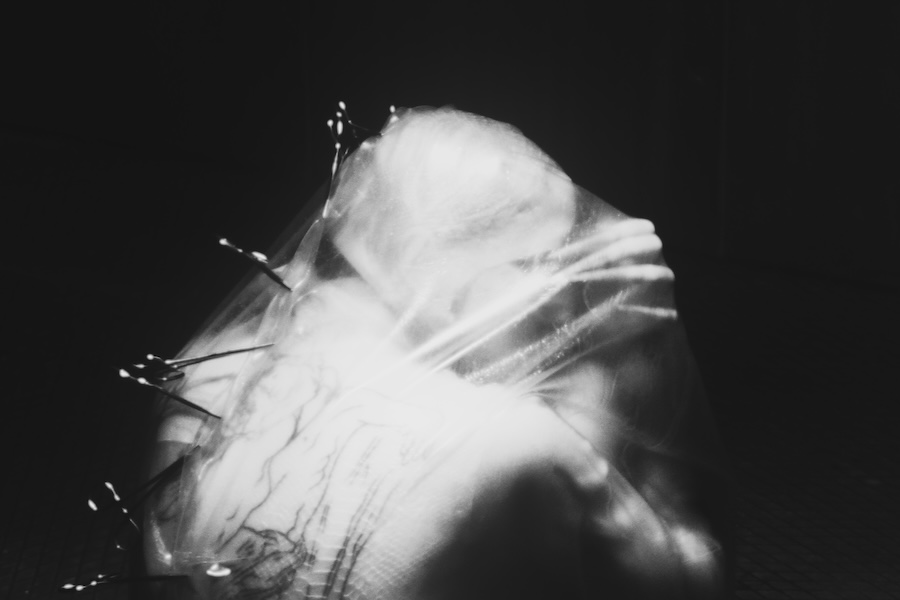
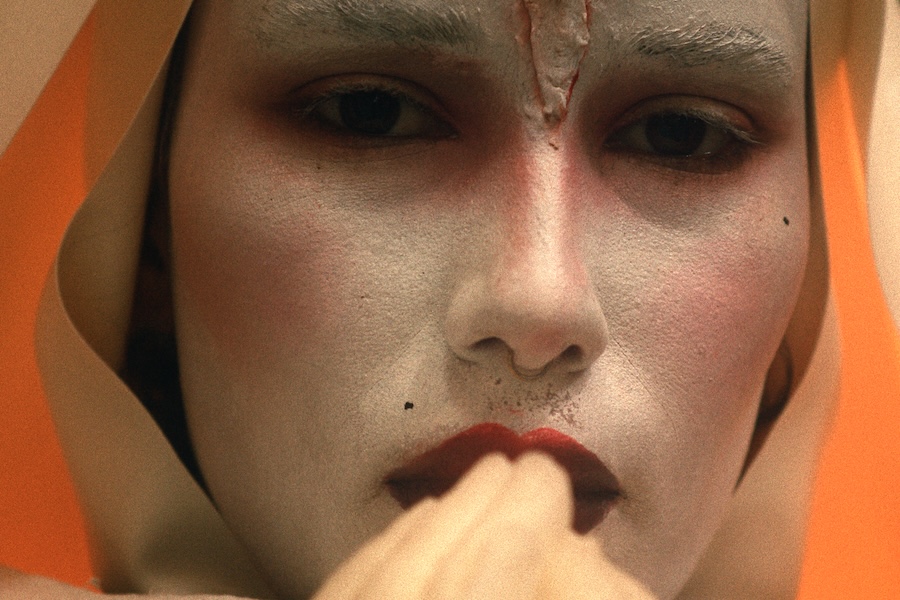
How did participating at the FASHIONCLASH festival shape your work and its reception?
FASHIONCLASH, though I only got to experience it briefly, revealed itself to me as a melting pot of creatives from all over the world, each of them with their own unique vision and using it to address burning questions, injustices and topics close to their heart. I met some amazing fellow creators, contacts that will hopefully remain and might spark new collaborations in the future.
It was positively overwhelming to see our work on the big screen, being appreciated and celebrated by a bigger audience, and even being awarded for our storytelling and authenticity. That definitely gave me the confidence boost I needed to keep working in this direction. Let’s face it, continuing through rejection and doubts being placed on you from the outside is hard. Being received with such open arms at FASHIONCLASH reassured me that there is an audience for my work and that there are people who understand and are ready for this kind of change.
The festival and the collaboration with KALTBLUT. have brought us more visibility, something that fashion can’t live without, and we are so grateful for. Where it will bring us is still unknown, but I, for one, am excited and ready to see what is still in store for us.

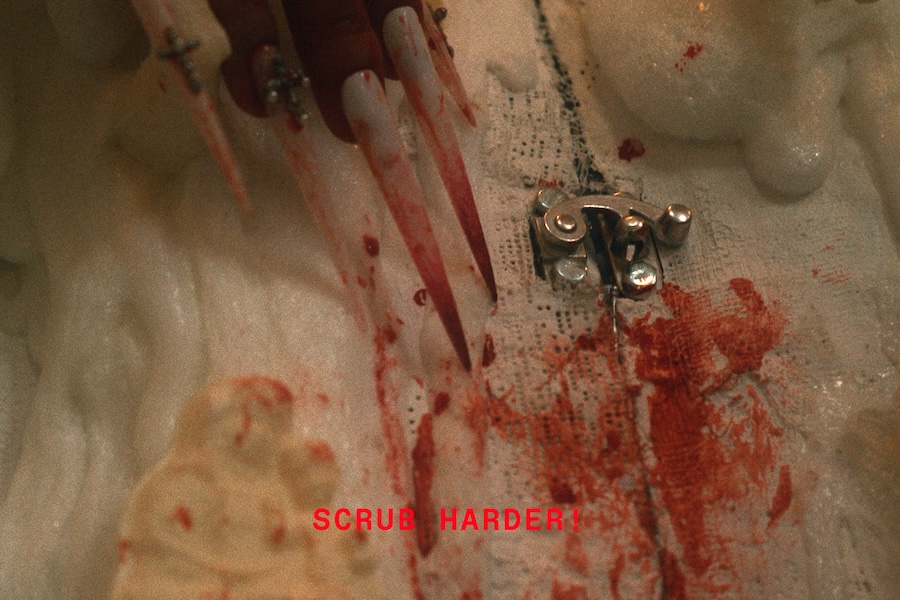
Niclas Hasemann:
What aspects of your background as a cinematographer influenced the visual style of “The Feminine Urge”?
Recently, I have been really fascinated by the eerie quality of infrared imagery, but I have been waiting for the right project to properly use it. When I read this script, I immediately got the feeling it would be a perfect fit here. So, after deciding we would film the first and last sequence in monochrome infrared, that set a visual framework for the rest of the film to exist in between. I then designed the look of the other sequences to match the infrared footage in its harshness and grittiness, but depart from it into an almost achingly colourful sphere.
How do you collaborate with designers like Lilian to ensure the film’s aesthetic aligns with the narrative?
Being a trained fashion designer myself, a strong connection between the clothing shown and a film’s overarching narrative is very important to me. When creating an aesthetic language for a fashion film, I first always listen to the designers and look at their creations to see the narrative they already convey on their own. By paying close attention and finding a good way of inserting my own sensibility, I always hope to emphasise their meaning and build on top of it. In this case, it was a really organic process, because the initial script was so rich and Lili had already created such strong personas for her designs. It was just a matter of imagining their worlds and diving into them with the camera.


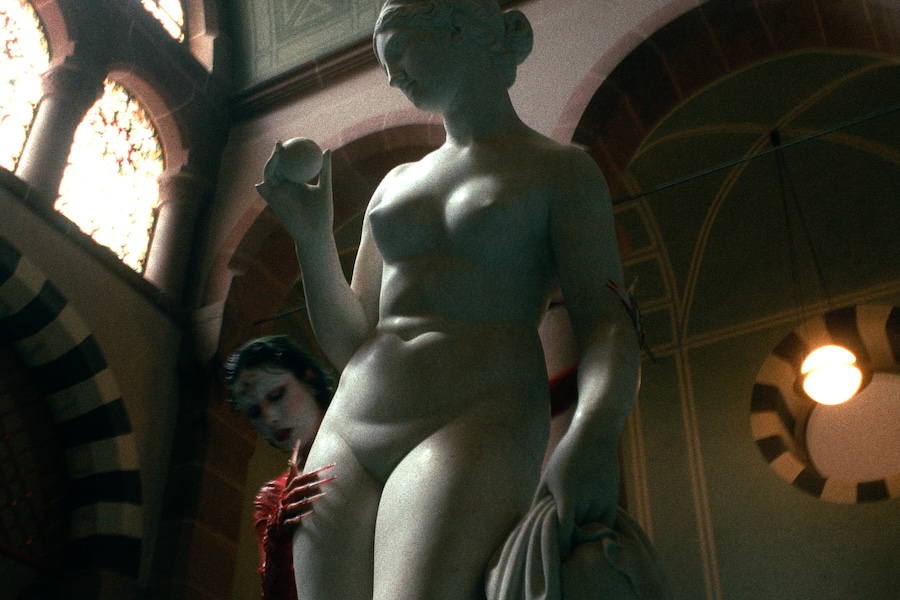
What was the most challenging scene to shoot, and how did you overcome it?
I think the most challenging scene for me was the first one we did, which was ‘Mater Gregiorum’. Starting to shoot a new project is always a bit nerve-wracking because everyone on the crew still has to get used to each other. But in this case, it got even more intense because we shot at night with the horses at the farm of Lili’s parents. Getting a foal to drink in front of our lights and cameras took longer than anticipated. Whereas Bianca, who plays the Mater, was not able to stand on her own with her hoof-boots and got colder and more cold as we shot later and later into the night. But ultimately, the foal drank, and everyone was really tough, patient, and considerate of each other. So I think after we were able to wrap this part, it really brought us closer together and assured us of the path forward for the rest of the shooting days to come.
Can you elaborate on the concepts that inspired your direction in this film?
There are different concepts behind the individual characters portrayed in the film; all of them are related to horror film tropes around female qualities and the female body. When directing this film, we made sure not just to repeat these tropes, but to subvert them by redistributing the agency into the hands and claws of our protagonists. Visual influences for me in particular were photographs by Daisuke Yokota and horror classics like Nosferatu and Suspiria. Thematically, I also looked at a lot of contemporary female-led horror films like The Substance, Jennifer’s Body, and Black Swan for their treatment of femininity in relation to attraction, repulsion, and ambition.
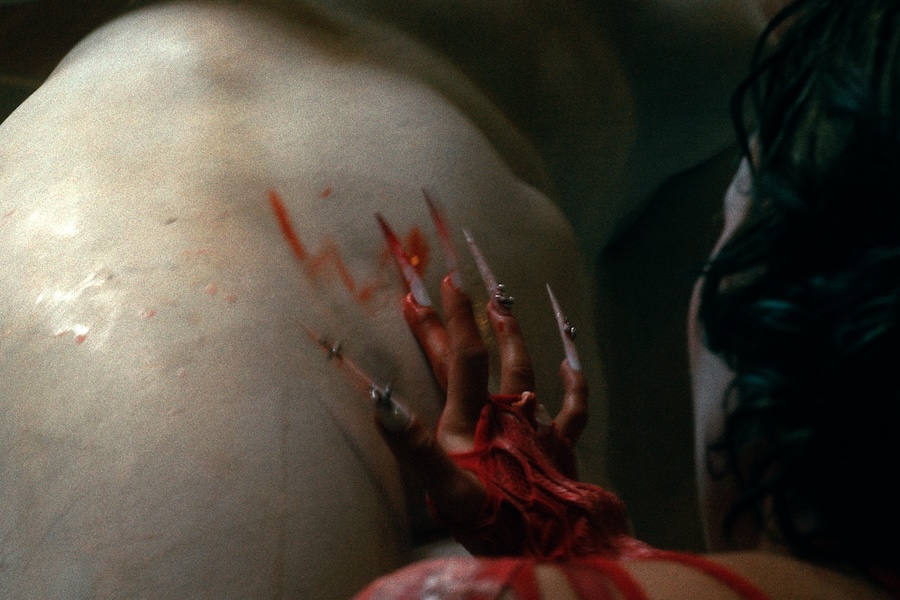
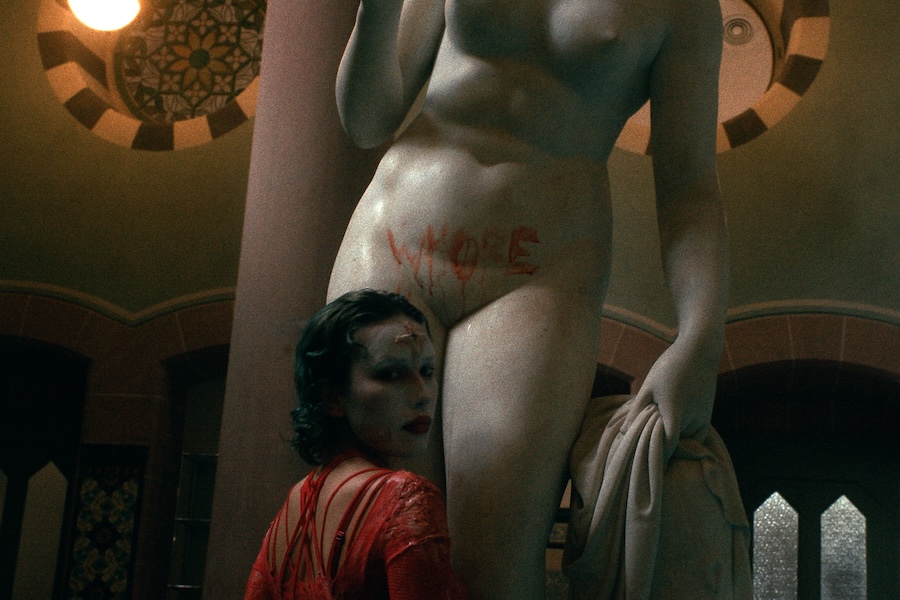
In your opinion, how does “The Feminine Urge” reflect contemporary discussions around femininity in society?
In Pforzheim, the place where Lili, Annie and I used to study and where most of ‘The Feminine Urge’ was shot, it is all too common for female passing people to be uncomfortable walking through the city alone at night. Whenever we said our goodbyes, we always added ‘get home safe, ’ and we really meant it. In Pforzheim are so many dimly lit alleys, winding underpasses and creepy men lurking behind corners. At night, the city almost seems to belong to them because they think they are free to do whatever they want. ‘The Feminine Urge’ answers this predatory behaviour not by hushing past them unnoticed, but by biting back. It portrays femininity not as something fragile that has to be protected, but as something proactive, grotesque, and playfully monstrous. It is more than capable of reclaiming not only alleyways but all spaces it chooses to demand for itself. I think today it has become apparent that we won’t get a society with equal securities, chances, and participation for everybody just by hoping for the best. Maybe for the men of Pforzheim to finally leave women alone, they might need to experience a little fear of a bloodthirsty vaginal nightmare following them home at night.
What opportunities do you see for collaboration and growth among young creatives at FASHIONCLASH?
I think Fashionclash is a great opportunity for young creatives to exchange ideas, because it brings together so many forms of expression, all centred around clothes. There are people doing everything from design, installations, film, to performance, who can exchange their experiences and ways of working with each other. I am a big believer in the fact that new ideas can often grow in between disciplines, and I think FASHIONCLASH offers a perfect ground for these seeds to take root.


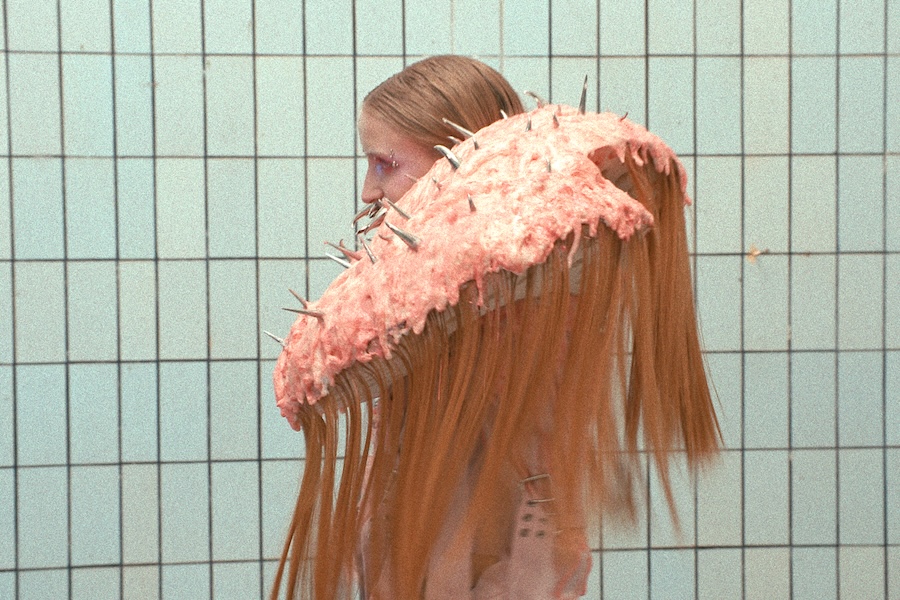
Phuong An Phi:
What was the initial idea behind “The Feminine Urge,” and how did it evolve during the production process?
The project began with a long-standing desire to explore the feminine experience and, in particular, the phenomenon of female rage. For me, truly feminist work is inseparable from collaboration between womxn, which is why Lilian and I needed to develop a deeply symbiotic creative partnership. I vividly remember us watching The Substance together for the first time and leaving the cinema with a transformed understanding of horror, the abject, womxnhood, and the monstrous feminine.
Our extensive research made it clear that we needed to create something unapologetic. Something loud, radical, and unrestrained. A work that confronts viewers with their own relationship to femininity and challenges them to rethink the boundaries of the feminine, the grotesque, and the powerful.

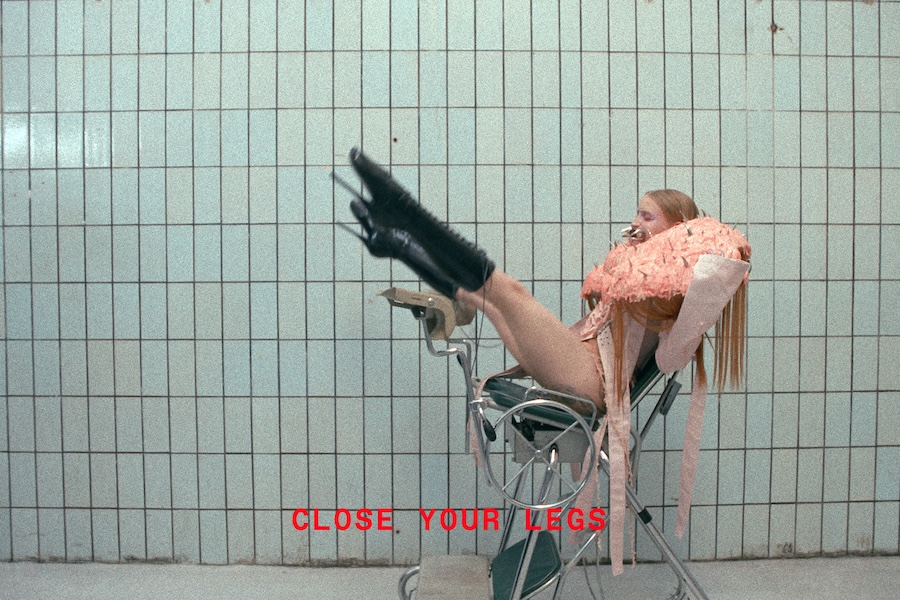
How did you envision combining the themes of femininity and fashion within the film’s narrative structure?
The narrative structure of the film is built around each character’s expression of monstrous femininity, an idea that is directly reflected in their costumes. Lilian and I approached the visual concept through the lens of the feminine cycle, understanding the outfits as material manifestations of womxn’s lived experiences.
While the designs may appear monstrous, fearful, provocative, or even unsettling, we wanted them to function as aesthetic expressions of the shared female and queer experience. The monstresses and their fashion become a form of solidarity. Like a way of saying, look at how we wear our weapons, our wounds, our so-called “shame” openly, unapologetically, and beyond the boundaries imposed by patriarchal norms.
In this sense, fashion becomes both narrative and resistance, a storytelling device that visualises the power, complexity, and radical beauty of femininity.

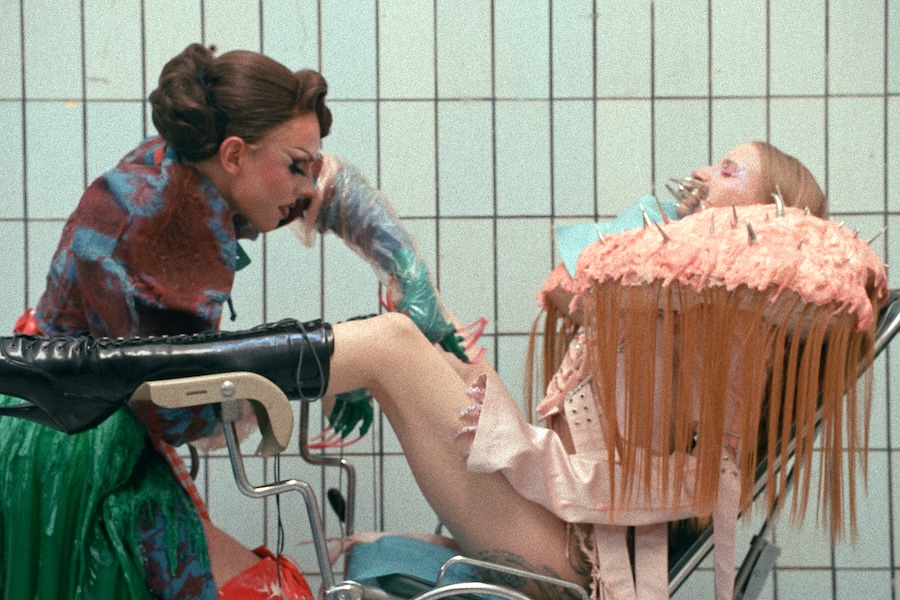
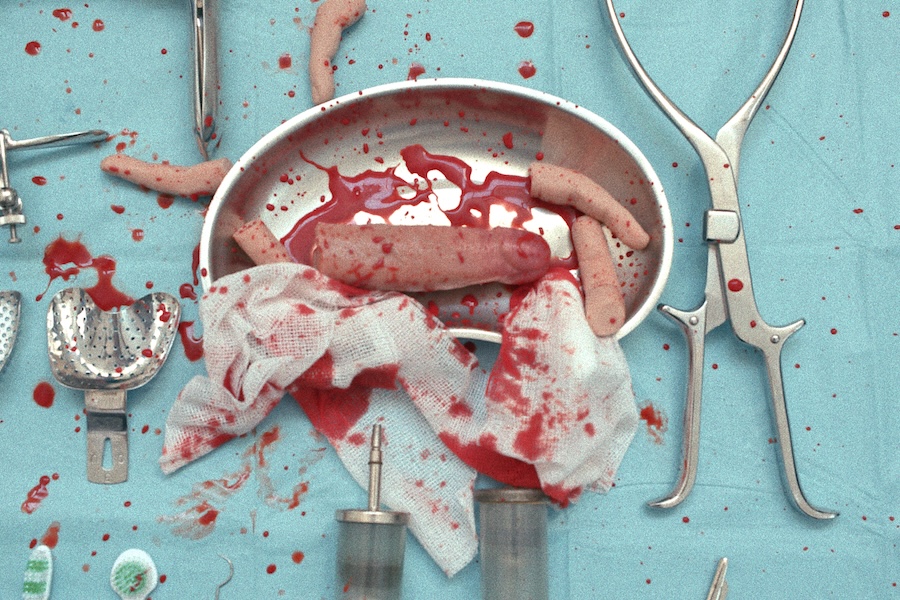
What are some of the key lessons you’ve learned from producing this film that you would like to share with upcoming filmmakers?
One of the most important lessons for me was the necessity of creating a genuine, safe and respectful environment for everyone involved. When you’re making feminist work, it would be contradictory and harmful if the people on set felt uncomfortable or unable to voice their concerns.
Even under the pressure of long shooting days and tight schedules, it should be important to honour each person’s boundaries. If someone didn’t feel comfortable in a costume, we changed it. If someone needed to stop filming, we wrapped for the day. If anyone was exhausted, they were free to take a break. For me, creating a safe space defines the ethics of the project.
The film industry can often be cutthroat and unforgiving, which is exactly why we need to look out for one another. Prioritising care, communication and mutual respect doesn’t slow the process down; it strengthens the work and the collaboration behind it.


Why do you believe FASHIONCLASH Festival is important for emerging artists in the fashion and film industries?
I actually wasn’t familiar with FASHIONCLASH Festival before working on “The Feminine Urge”. I discovered it through our co-director, Nic, and immediately realised how unique this platform is, especially for emerging filmmakers and designers. FASHIONCLASH creates a space where unconventional, hybrid, or genre-bending ideas aren’t just tolerated, but truly embraced. For young artists like us, that kind of openness is rare.
I also appreciate how the festival actively highlights voices and perspectives that are often overlooked in the mainstream fashion and film industries. It encourages you to approach your work boldly and unapologetically, and it connects you with a community that values innovation, identity, and artistic risk-taking.
For me, discovering FASHIONCLASH felt like finding a platform where our film and the themes we’re exploring could genuinely resonate.



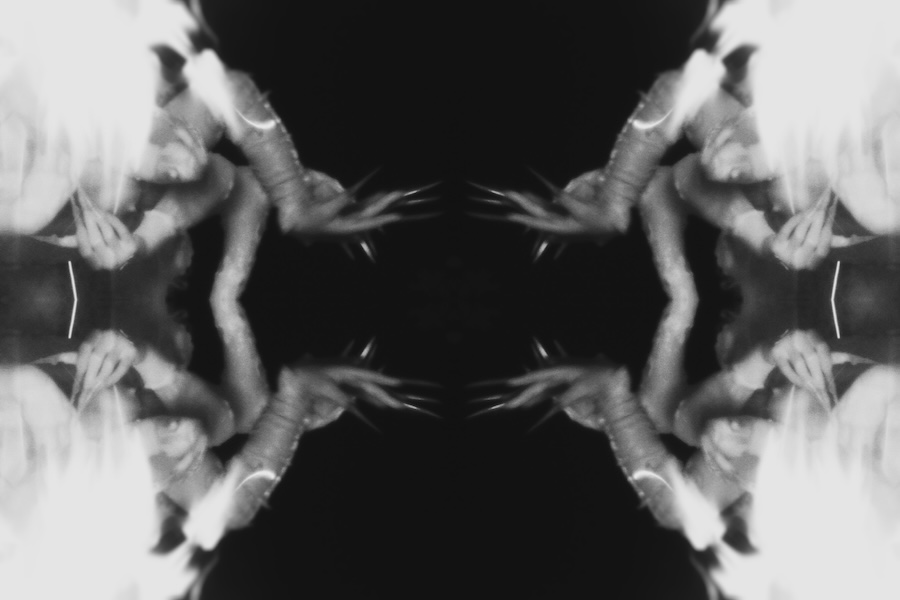

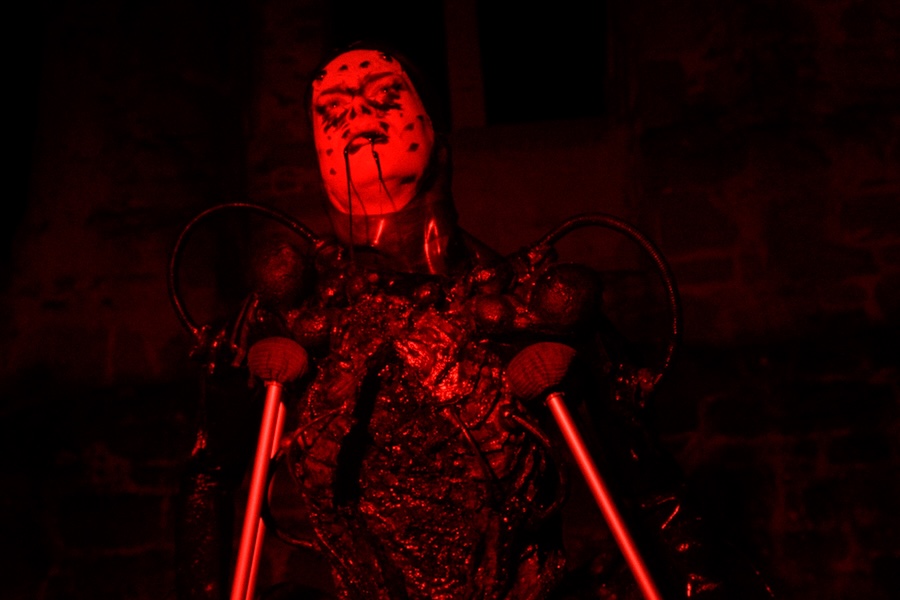
Cast:
𝔒𝔣𝔣𝔰𝔭𝔯𝔦𝔫𝔤 – @shermaninfant
𝔐𝔞𝔡𝔬𝔫𝔫𝔞 𝔞𝔫𝔡 𝔱𝔥𝔢 𝔚𝔥𝔬𝔯𝔢 – @lilianclarafelice
𝔙𝔞𝔤𝔦𝔫𝔞 𝔇𝔢𝔫𝔱𝔞𝔱𝔞 – @shermaninfant
𝔇𝔬𝔠𝔱𝔬𝔯 – @cvntholz
𝔐𝔞𝔱𝔢𝔯 𝔊𝔯𝔢𝔤𝔦𝔬𝔯𝔲𝔪 – Bianca Brade
𝔗𝔥𝔢 𝔄𝔯𝔠𝔥𝔞𝔦𝔠 𝔐𝔬𝔱𝔥𝔢𝔯 – @wandahure
Screenplay: @loevli.lili , @aniebea
Creative Direction: @loevli.lili , @aniebea , @niclas.hasemann
Collection & Costume Design: @loevli.lili
Cinematography & Editing: @niclas.hasemann
Photography: @pfan.ni , @aniebea
Set Design: @loevli.lili, @aniebea, @niclas.hasemann
Production Management: @loevli.lili , @aniebea
Hair and Makeup: @klara.d.hedgehog , @daniel.hxngxr , @wandahure , @cvntholz
Nails: @rowzy.designs
Music: @simon_seeleuther, Flo Huth, @kyng.music
Voice Acting: michaela_fent , @leonie.jcbs , @joanna_lsi
Production Assistance: @mizzi.exe , @n.manu , @adrien_richard00 , @lot.tta_ , @its_gebbby
Locations: @alter_schlachthof_pforzheim , @palais_thermal , Klosterruine Hirsau @schloesser_bawu
Special Thanks: Sven Hummel, Jens Brade, Ben Brade, @melissa_schli , @fashion_design_pf , @design_pf , Prof. Simone Sommer, Dagmar Korintenberg, @theaterpforzheim , @sxphie.exe , @nemnichc , @lennart_bohle , @liiiiiiiiiiiiiiiiiiiina , @nichellski , @anticapitalist.salamander , @ferle.rei , @studiolunarae , @vladijewl , @zora_925 , @ida.opel , @sen_sitiv , @maria_isabel_jensen , @pia2710_ , @kiki_czerner , @linscha_ , @zumgoldenenheinrich , @kaupo_plankenhorn
